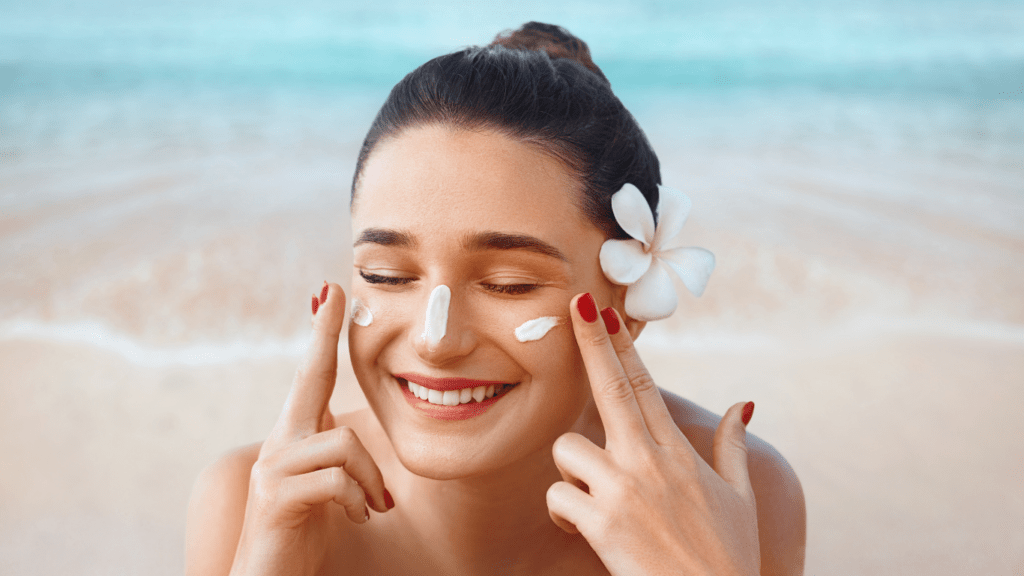Understanding SPF and Its Importance
SPF, or Sun Protection Factor, plays a crucial role in skincare. It measures how well a sunscreen can protect the skin from UVB rays.
What is SPF?
SPF stands for Sun Protection Factor. It indicates the level of protection a sunscreen provides against UVB rays. A higher SPF number offers greater defense. For instance, SPF 30 blocks approximately 97% of UVB rays, while SPF 50 blocks about 98%. It’s essential to choose an appropriate SPF based on your skin type and sun exposure duration.
How SPF Protects Your Skin
SPF protects your skin by absorbing, reflecting, or scattering UVB rays. UVB rays cause sunburn, damage skin cell DNA, and increase the risk of skin cancer. By using sunscreen with the right SPF, you minimize these risks. To receive adequate protection, apply sunscreen generously on all exposed skin areas and reapply every two hours or after swimming or sweating.
Benefits of Using Sunscreen Daily
Daily use of sunscreen offers numerous advantages for skin health. It goes beyond merely protecting against sunburn.
Prevention of Skin Cancer
- Sunscreen significantly reduces skin cancer risks.
- UV radiation exposure can lead to mutations in skin cells which can cause cancer.
- According to the Skin Cancer Foundation, daily application of sunscreen with SPF 15 or higher lowers the risk of squamous cell carcinoma by about 40% and melanoma by 50%.
- Consistent use aids in shielding the skin from harmful rays.
Anti-Aging Properties
Sunscreen prevents premature aging signs. UV rays accelerate skin aging, leading to wrinkles, fine lines, and age spots. A 2013 study published in the Annals of Internal Medicine found that daily use of broad-spectrum sunscreen slows skin aging by 24% in individuals under 55. Ensuring sunscreen in your routine helps maintain youthful, smooth skin.
Protection Against Sunburn
Avoid painful sunburns with sunscreen. Sunburn occurs when UV rays penetrate the skin, damaging cells. Symptoms include redness, swelling, blistering, and peeling. SPF-rated sunscreens protect by blocking or reflecting UV rays. Applying every two hours and after swimming or sweating ensures continuous protection.
Different Types of Sunscreens

Choosing the right type of sunscreen is crucial for effective skin protection. Each type has unique properties and benefits tailored to different skin needs.
Chemical Sunscreens
Chemical sunscreens contain organic compounds like oxybenzone, avobenzone, and octinoxate. These ingredients absorb UV radiation, convert it into heat, and release it from the skin. Chemical sunscreens usually blend seamlessly, making them ideal for everyday wear. They need about 20 minutes to activate after application, so it’s essential to apply them before sun exposure.
Physical (Mineral) Sunscreens
Physical sunscreens, also known as mineral sunscreens, use active mineral ingredients like zinc oxide and titanium dioxide. These ingredients sit on the skin’s surface, reflecting and scattering UV rays. Physical sunscreens provide instant protection upon application and are suitable for sensitive or acne-prone skin as they are less likely to cause irritation. They may leave a white cast on the skin, though newer formulations minimize this effect.
Hybrid Sunscreens
Hybrid sunscreens combine both chemical and physical UV filters, offering broad-spectrum protection. They include ingredients from both categories, providing the benefits of quick absorption and a more invisible finish while delivering the reliable blockage of UV rays. Hybrid sunscreens cater to those seeking comprehensive protection with a balanced formulation suitable for various skin types.
Choosing the Right Sunscreen
Choosing the right sunscreen can feel overwhelming with so many options available. It’s essential to understand different SPF levels, formulations, and skin type considerations.
SPF Levels and What They Mean
SPF, or Sun Protection Factor, indicates a sunscreen’s effectiveness against UVB rays. SPF 15 blocks about 93% of UVB rays, SPF 30 blocks around 97%, and SPF 50 blocks approximately 98%. For example, a higher SPF number offers marginally better protection but isn’t twice as effective as a lower SPF. Opt for an SPF that suits your sun exposure duration and skin sensitivity.
Sunscreen Formulations: Lotions, Sprays, and Sticks
Sunscreen formulations vary, each offering unique benefits:
- Lotions: These provide even coverage and hydration, ideal for normal to dry skin. They’re typically used for both face and body applications.
- Sprays: Convenient for quick application, sprays are great for large areas but often require careful application to ensure adequate coverage.
- Sticks: Perfect for targeted areas like the face and sensitive skin zones, sticks offer portability and precise application without the mess.
Finding the Best Sunscreen for Your Skin Type
Different skin types need different sunscreen formulations:
- Oily Skin: Look for oil-free, non-comedogenic (non-pore clogging) sunscreens like gel-based or lightweight formulas.
- Dry Skin: Choose hydrating sunscreens with moisturizing ingredients such as hyaluronic acid or glycerin.
- Sensitive Skin: Opt for physical (mineral) sunscreens containing zinc oxide or titanium dioxide to minimize irritation.
- Combination Skin: Hybrid sunscreens provide a balance of UV protection and skin benefits, catering to various skin needs.
Selecting the right sunscreen involves considering SPF levels, formulation types, and your skin type. By understanding these factors, you can ensure optimal skin protection.
Common Myths About Sunscreen
Many misconceptions surround sunscreen use. Addressing these myths ensures better skin protection and health.
Myth 1: People with Dark Skin Don’t Need Sunscreen
This myth leads many to skip sunscreen, thinking their darker skin provides sufficient protection. Darker skin has more melanin, which offers some UV protection but doesn’t eliminate the risk of damage. People of all skin tones can experience sunburn, hyperpigmentation, and increased skin cancer risks. According to the Skin Cancer Foundation, skin cancer can be more dangerous for darker skin tones due to later detection. Applying sunscreen with broad-spectrum SPF 30 or higher remains essential for everyone.
Myth 2: Sunscreen is Only Needed on Sunny Days
This myth implies that overcast skies provide enough UV protection, which is inaccurate. UV rays penetrate clouds and cause skin damage, even on cloudy days. The American Academy of Dermatology reports that up to 80% of the sun’s UV rays reach the earth on cloudy days. Year-round sunscreen use prevents cumulative skin damage and reduces the risk of skin cancer. Consistent application, regardless of weather, offers crucial protection against harmful UV radiation.





